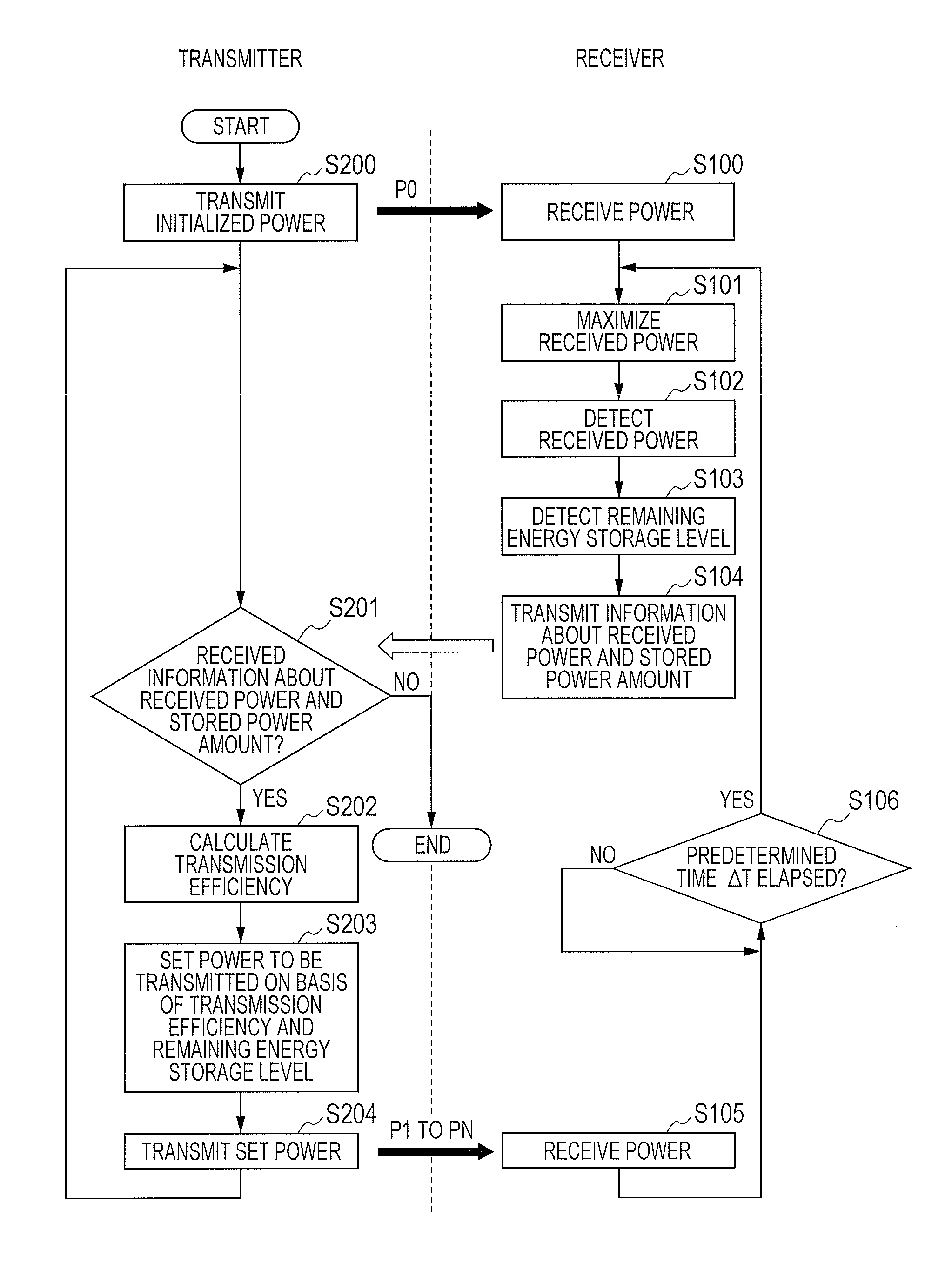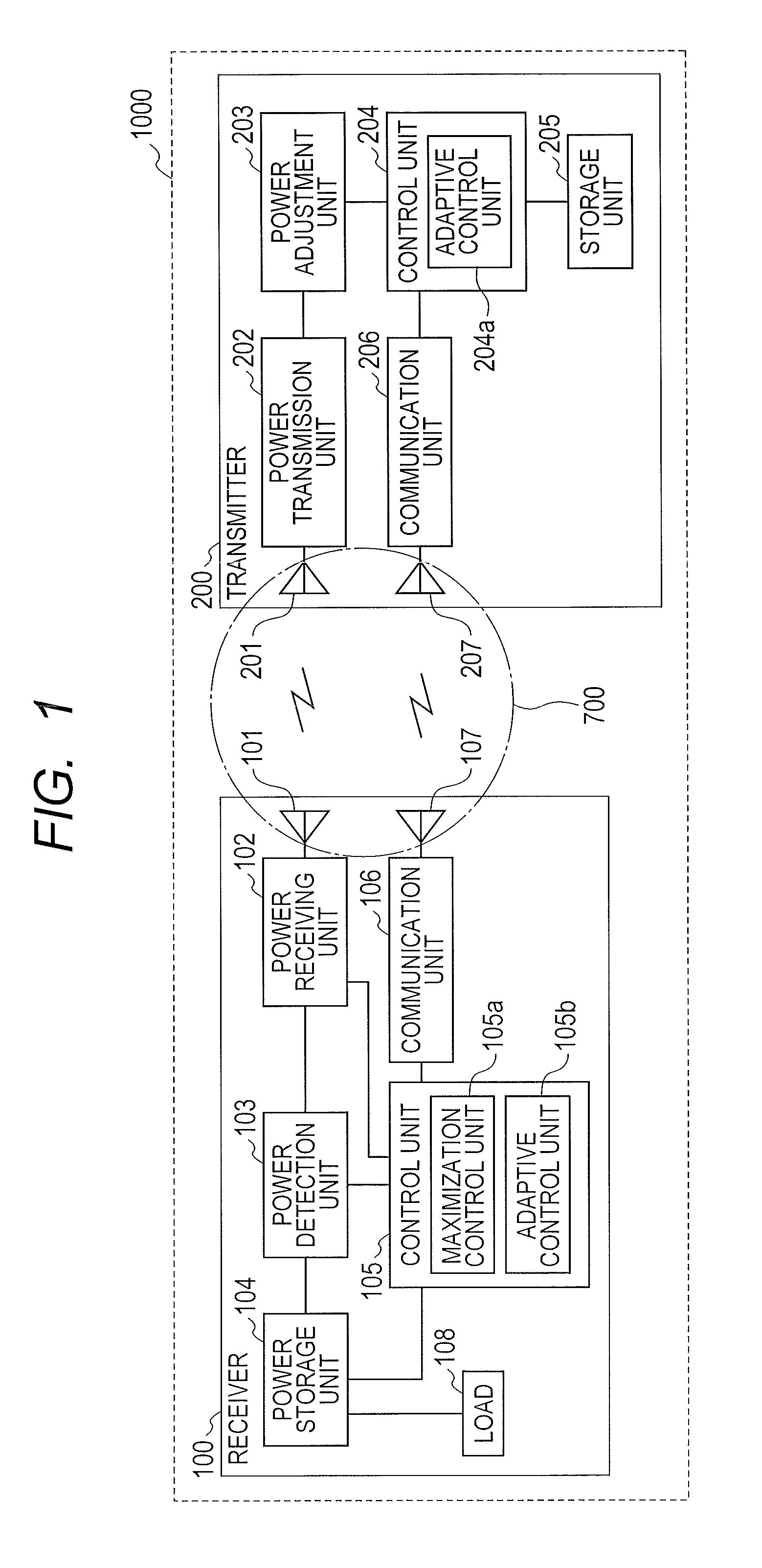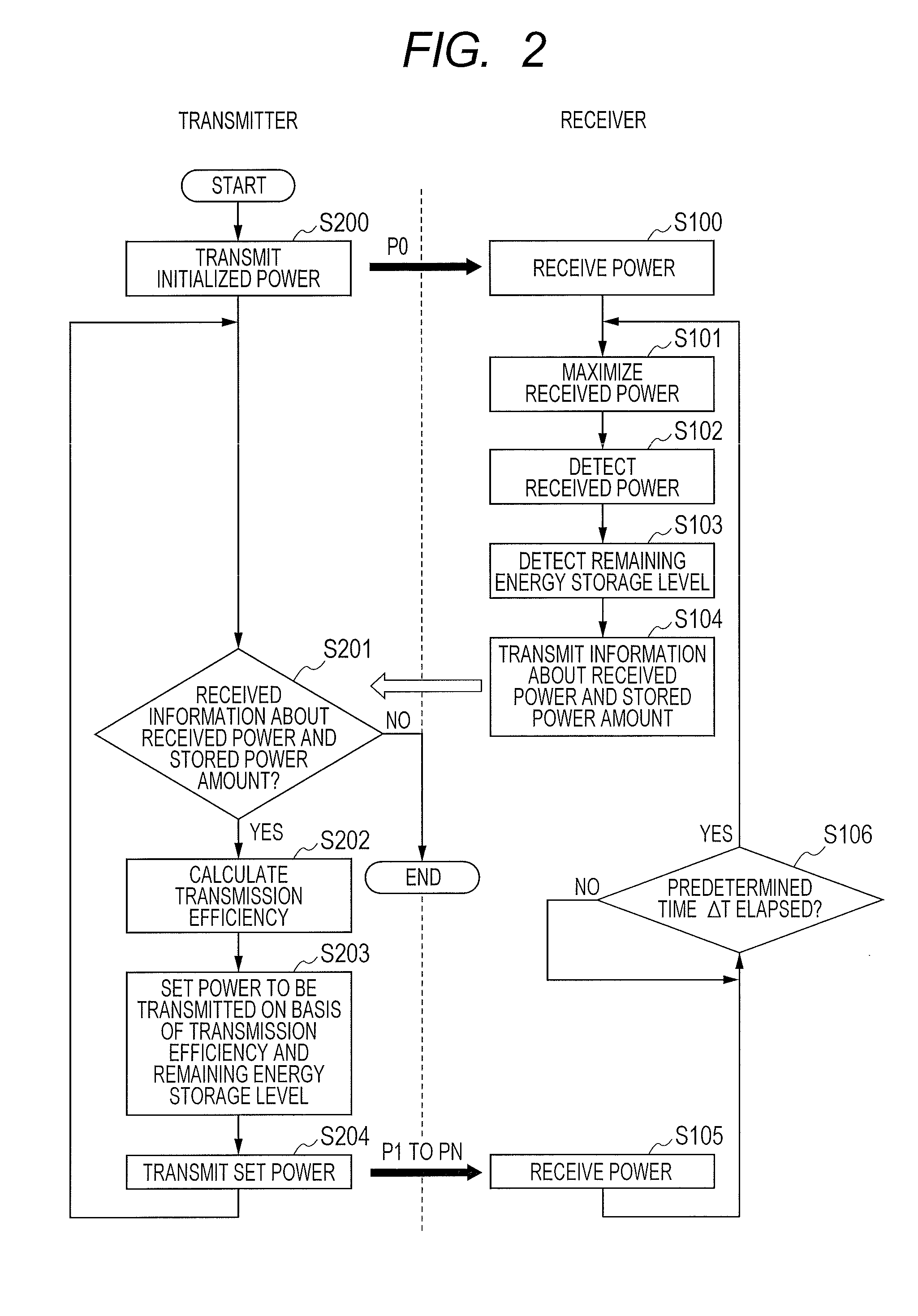Wireless power transmission system, transmitter, and receiver
a power transmission system and wireless technology, applied in the direction of inductance, transportation and packaging, sustainable buildings, etc., can solve the problems of inability to say, stop transmitting power, abnormality, etc., to achieve average efficiency, improve average transmission efficiency, and average power transmission
- Summary
- Abstract
- Description
- Claims
- Application Information
AI Technical Summary
Benefits of technology
Problems solved by technology
Method used
Image
Examples
first embodiment
[0041]In this embodiment, an example of a wireless power transmission system that adjusts power to be transmitted by a transmitter on the basis of power transmission efficiency and the amount of power stored in a receiver will be described with reference to FIGS. 1 to 4C.
[0042]FIG. 1 is an example configuration of the wireless power transmission system according to this embodiment. A wireless power transmission system 1000 includes a receiver 100 and a transmitter 200. The receiver 100 includes a power receiving antenna 101, a power receiving unit 102, a power detection unit 103, a power storage unit 104, a control unit 105, a communication unit 106, and a communication antenna 107. An electronic apparatus such as a cellular phone is coupled to the power storage unit 104 as a load 108.
[0043]The transmitter 200 includes a power transmission antenna 201, a power transmission, unit 202, a power adjustment unit 203, a control unit 204, a storage unit 205, a communication unit 206, and a...
second embodiment
[0067]A wireless power transmission system, a transmitter, and a receiver according to a second embodiment of the present invention will be described with reference to FIGS. 5 to 6B. In this embodiment, the power to be transmitted by the transmitter is adjusted on the basis of the present power transmission efficiency and the past power transmission efficiency with respect to a certain receiver and the amount of power stored in the receiver. In this embodiment, the transmission efficiency is calculated on the basis of the present and the past (one to multiple cycles) power transmission efficiency histories, in other words, on the basis of the cumulative incidence.
[0068]FIG. 5 is a flowchart a process performed by the transmitter and the receiver according to this embodiment. The configuration and flow related to the received power maximization are the same as those in the first embodiment and will not be described. (The same goes for the other embodiments.)
[0069]The transmitter 200 ...
third embodiment
[0078]A wireless power transmission system, a transmitter, and a receiver according to a third embodiment will be described with reference to FIGS. 7 to 8. In this embodiment, the transmitter adjusts power to be transmitted thereby on the basis of the power transmission efficiency, the amount of power stored in the receiver, and the power consumption of the receiver.
[0079]FIG. 7 is a flowchart a process performed by the transmitter and the receiver according to this embodiment.
[0080]The transmitter 200 initializes the power adjustment unit 203 and transmits initialized power from the power transmission unit 202 (S200). The receiver 100 receives the initialized power 5200 at the power receiving unit 102 (S100). The control unit 105 then controls the power receiving unit 102 so that the received power is maximized (S101). The power detection unit 103 then detects the received power (S102). The control unit 105 then detects the amount of power stored in the power storage unit 104 (S103...
PUM
 Login to View More
Login to View More Abstract
Description
Claims
Application Information
 Login to View More
Login to View More - R&D
- Intellectual Property
- Life Sciences
- Materials
- Tech Scout
- Unparalleled Data Quality
- Higher Quality Content
- 60% Fewer Hallucinations
Browse by: Latest US Patents, China's latest patents, Technical Efficacy Thesaurus, Application Domain, Technology Topic, Popular Technical Reports.
© 2025 PatSnap. All rights reserved.Legal|Privacy policy|Modern Slavery Act Transparency Statement|Sitemap|About US| Contact US: help@patsnap.com



